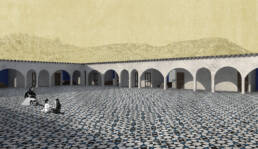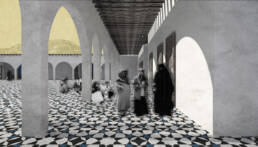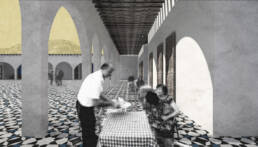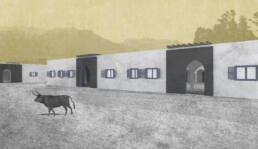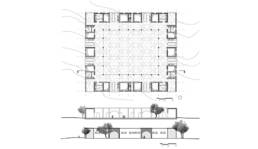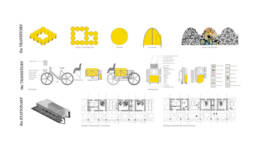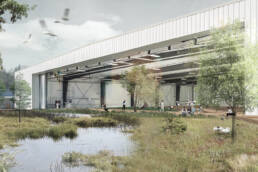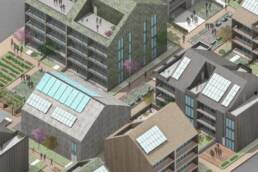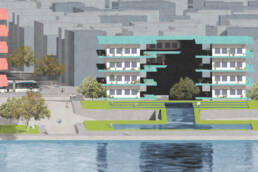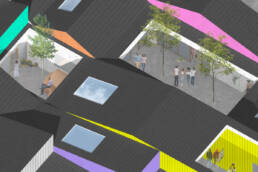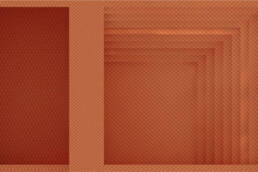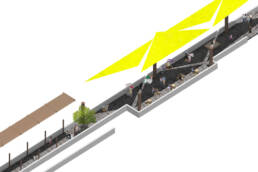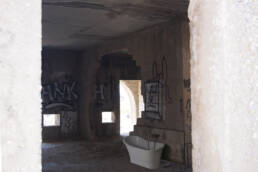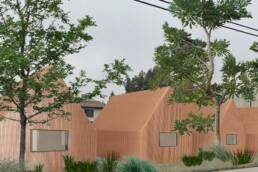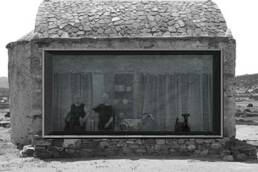
Refugee Housing in Ikaria, Greece
SHELTERING HUMANITY: EMERGENCY HOUSING PROPOSALS FOR THE MEDITERRANEAN
The Syrian refugee situation is a crisis of numbers: over 4.8 million refugees migrating out of Syria, thousands continue to arrive daily on Greek shores, and the humanitarian assistance supplied is wholly inadequate to handle their basic needs. Because of the implicit assumption that the relief efforts must be centralized, there are too few to help too many. Instead, we believe that the burden of relief must be distributed. This proposal presents a distributive strategy that aims to provide for basic needs. The elements are intended to be modular, interchangeable, and flexible.
There are two aspects to this proposal: the stationary and the transitory. The stationary element (the ‘transit station’) is comprised of courtyard housing which can be re-appropriated by the tourist economy – as Syrian migrants reach their Northern European destinations, the courtyard blocks, situated along the coasts of islands, can house tourists. The transitory element is comprised of lightweight solutions to shelter, mobility, and basic needs as Syrians migrate from one stop to the next throughout their journey.
THE STATIONARY (‘TRANSIT STATION’)
The ‘transit station’ serves as way-stations for travelers to refresh supplies, use facilities, wash, and rest in a more fixed environment. Located along major migration routes, the stops are set up to serve families in a communal environment, sharing sleeping areas, resources, and information. The bathrooms utilize compost toilets that take waste in order to create clean methane gas for cooking, lighting, and electricity.
THE TRANSITORY
The tent, comprised of a lightweight aluminum tubular frame and waterproof fabric, is carried with each pack. Its shape loosely alludes to vernacular Syrian conical ‘beehive’ houses, adorned with contemporary decorative patterns that distinguish each unit.
The bicycle is the most efficient means of human transportation, and is able to carry individuals and their belongings long distances. They are designed to carry front and back loads, with specialized frames for a variety of tasks: a child carrier frame, a luggage frame, a multipurpose frame carrying additional items. The frames may be interchanged and connected together as needed.
The backpack is the essential element refugees can carry with them through their migration, consisting of modular units, including an ‘option’ pack for different needs and situations, geared towards individuals who are able to provide specific functions and skills (i.e. a trauma pack may be carried by those who are able to provide emergency medical skills, while a baby pack may contain items such as diapers, wipes, and powdered milk.)
THE ARCHITECTURE
The stops are designed to recall elements of their former homes, synthesizing the sparsely geometric Greek courtyard with the more decorative elements of the Syrian courtyard typology. The variegated arches of the inner arcade reflect the dimensions of the corresponding rooms, offering outside shaded ‘alley’ areas to rest. Architectural details reflect the specific mixture of Greek and Syrian traditions within this building type.
If and when the refugee crisis is over in the future, it is envisioned that this typology will transition into rest areas and lodging for traveling tourists, and the buildings will become permanent markers that stand as a legacy of the Syrian migration.
In collaboration with Dima Almobarak and Eric Lum.
Exhibited at the Mohamed Ali Museum in Kavala, Greece.
